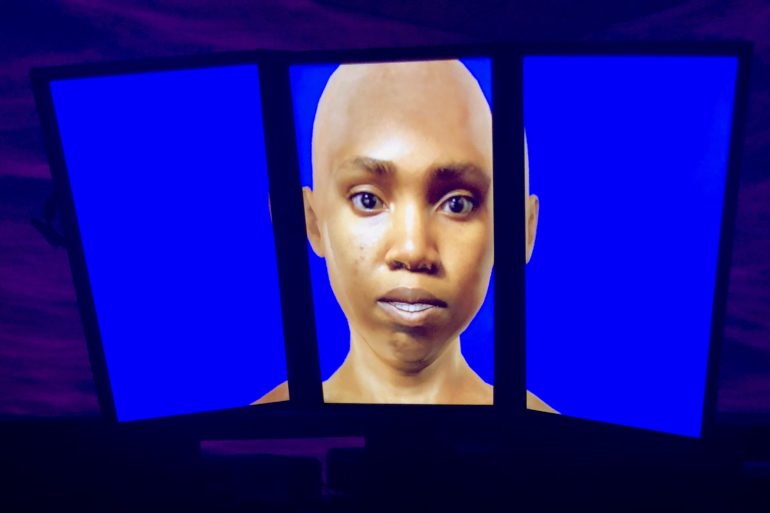
This post is also available in:

Presented at the Serpentine Gallery in London, the work of Sondra Perry, Typhoon coming on disembarks for the first time in America at the ICA – Museum of Contemporary Art – in Miami where it will remain staged until November 04, 2018.
Sondra Perry is an interdisciplinary artist with a great passion for digital, hardware and metal. Born in Perth Amboy, New Jersey, she graduated from Columbia University and won the Gwendolyn Knight and Jacob Lawrence Prize and the Louis Comfort Tiffany Foundation Grant in 2017. She exhibited in major museums like: the MoMA PS1 in Long Island City, the Museum of Contemporary Art in Los Angeles, the LuXun Academy of Fine Arts Museum in Shenyang, China, the LOOP Barcelona Media Arts Festival and the Squeaky Wheel Film and Media Art Center in Buffalo.
The focus of her performance lectio magistralis is to explore the interaction between darkness, meant as a black identity, with particular reference to femininity, the African American heritage and the representation of black people throughout history and the way in which these factors interact with society, through digital culture and innovative use of video, multimedia installations and performances.

The immersive work of Sondra Perry, occupies the entire second floor of the museum and originates from an oil on canvas by John William Turner, The Slave Ship (Slavers Throwing Overboard the Dead and Dying, Typhoon Coming On), from 1840, preserved at the Museum of Fine Arts in Boston. With digital abstraction and through the use of 11 Sondra projectors, she is able to completely cover the interior walls of the environment, offering the public the possibility to experience the sensation of being on that same slave ship painted by Turner, blinded by blind rage of the angry sea, where the destructive force of the water prophesies the arrival of a typhoon, hence the name of the work. The ship tries to get away quickly from the area, leaving behind a terrible trail of debris and dark-skinned men. From the chains that surround their members we can understand that they are slaves. The scene is terrible and the drama of the scene is underlined by the alternation of bright colors and blood, a purple-black that moving is the angry bloody sea that transmits a terrible feeling of impotence.
The installation has a strong physical and symbolic value because it has managed to create an unprecedented connection between a work of art of 1840 and the art of the 21st century: starting from a painting, by its physical and static nature, Sondra Perry through the open source Blenda and the Software Chroma Key Blue, a post-production technique that separates the background from the foreground, replaces the static image with a continuously moving image projected in macro dimensions on the walls of the museum.

Turner’s work was not chosen by chance because it represents the diaspora, the slave trade. Back in his time, Turner himself learned of the event by reading the opera History of the Abolition of the Slave Trade by T. Clarkson and Walks in a Forest by Thomas Gisbourne and, with this painting, he wanted to denounce the African slave trade, which continued to thrive in the United States and many other countries, even in England, where slavery was, in theory, already long abolished.
People were taken with boats in search of a better future that translated into reality into slavery and exploitation of labor. More than ever current issues, especially in Europe.
Other works present and are well delimited by the color blue like the carpet. This recurring color is for Sondra the color of the change, as the TK – Suspicius Glorius Absence – a sofa placed at a distance of 2 meters, – more or less 6 feet and 7 inches – space to socialize with the media from a screen in which images shoot with the GoPro and words that denounce police violence against black people, to suffer from the death of Freddy Gray ,twenty-five, from Baltimore and Eric Garner, forty-four years old from Staten Island , dead without real reasons.
And two interactive pieces defined by her as “workstations”, built on the basis of the gym equipment that allow the application of work monitors to bicycle-like structures, to practice physical activity during the routine work to make the body better and the person more efficient. In one of these appears the same Sondra Perry avatar version that with an altered digital voice says “We are told that we will have to live up to our potential. But the potential is painful “.

